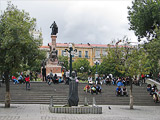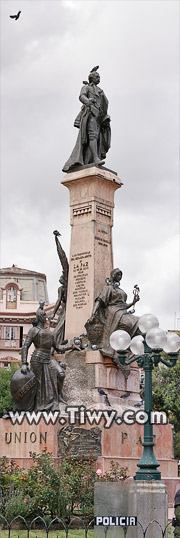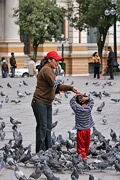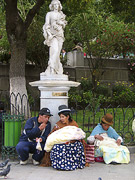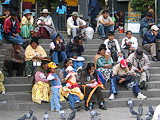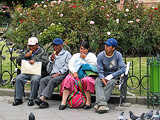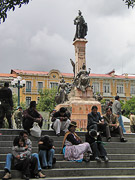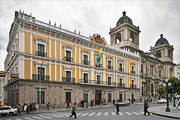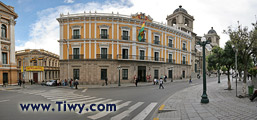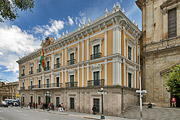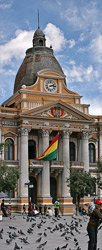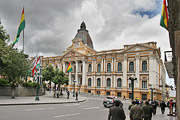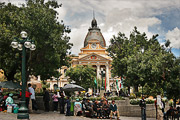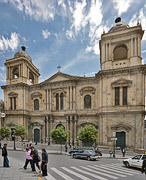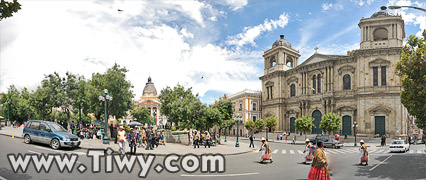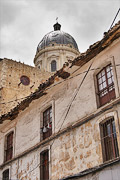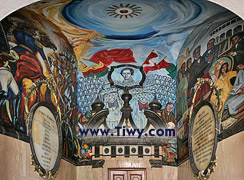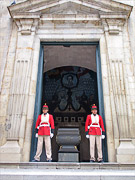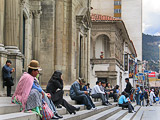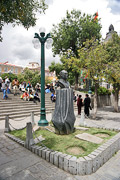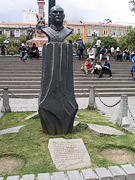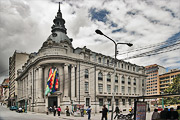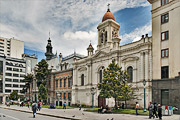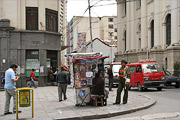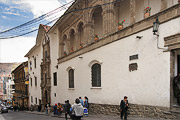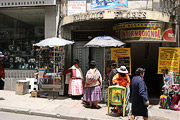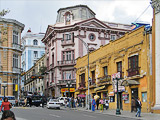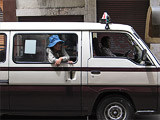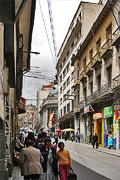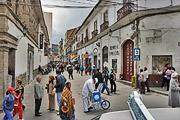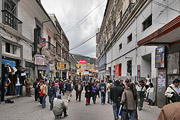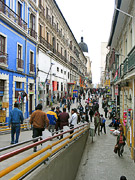Plaza Murillo, La Paz, Bolivia
Plaza Murillo is the very center of La Paz. It is named so in honour of Pedro Domingo Murillo (1759-1810), Bolivian patriot, mongrel, forerunner of the Bolivian independence.On July 16, 1809, he raised a mutiny against the governor-general of Virreinato del Rio de la Plata and proclaimed the independence. When in autumn of the same year the troops, faithful to Spanish crown, approached La Paz, there appeared a discord among the mutineers, after which some of them went to the Yungas valley, where soon they were defeated. In December in the Zongo valley, 56 km from La Paz Murillo was captured.
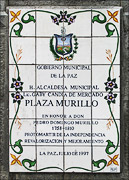
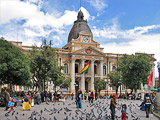
On January 20, 1810 the captured members of the July mutiny, including Pedro Domingo Murillo, were hanged.

Before his death Murillo said: «Compatriots, I die, but the torch ignited by me, cannot be put out by anyone. Long live freedom!». 16 years after, on August 6, 1825, the country finally obtained its independence.
100 years after the mutiny in 1909, Plaza Mayor or 16 of July square, was renamed in the Murillo square.
At the same time then in the centre of the square a three-meter high monument to Pedro Domingo Murillo was erected by an Italian sculptor Ferruccio Cantella.
At the foot of the monument there is a sculpture image of a woman, that embodies the Motherland (State), next to her is liberator soldier, and to the right (on the photo) – a bronze lion as a symbol of fearlessness and triumph.
During shipment of the monument from Italy, the boat that carried the cargo from ship to the port, sank. Some portions of the monument were irretrievably lost.
After some time magnificent marble figures of ladies that embodied seasons of the year – Summer, Winter, Autumn, Spring and four muses of art – Painting, Architecture, Music and Sculptor appeared at the Murillo square. The marble statue «Summer» can be seen on the photo below.
Today, the Murillo square is the favorite place of rest of city dwellers. You get the impression that they sit along the square perimeter all day long. The main amusement is feeding the pigeons that feel rightful owners on the square. And as for me, they are too many.
The facade of the presidential palace - «Palacio Quemado» that means «Burned Palace» (see the photo above), faces the square. At the entrance to «Palacio Quemado» soldiers of the battalion Colorados carry the guard of honour. The first Indian president Evo Morales presently occupies the palace.
On the photo to the left – the building of Congress. The legislative power of Bolivia has a two-chamber system. The both chambers with deputies work in this palace.
Near to the presidential palace there is a Nuestra Señora de La Paz church (our Lady of Peace).
In the left wing of the church the guard of honour stands guard over the tomb with remains of Marshal Andres de Santa Cruz y Calahumana (1792-1865).
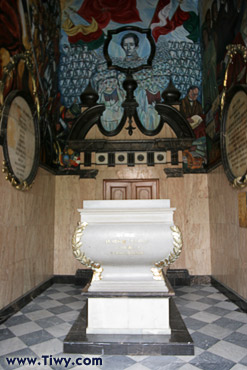
100 years after his death the Bolivian government returned his remains and put them in the mausoleum.
People also sit and rest on the steps of Nuestra Señora de La Paz church.
The monument to Gualberto Villarroel (1910-1946).
He ruled Bolivia from 1943 to 1946. Villarroel was a politician of national scale, in his convictions close to the leader of Argentine Juan Peron. In 1946 a crowd instigated by his enemies, stormed into the presidential palace and killed Villarroel. His lifeless body was hung on the lamp post not far from the entrance to the palace. The monument is situated on the Murillo square right on that place.
In two quarters from the Murillo square in the direction to Paseo El Prado, at the corner of Ayacucho and Mercado streets there is a building where Bolivian vice-presidents work.
On the other side of Mercado street there is a San Agustin church that was built in 1668, and a little bit further – the building of the La Paz mayor.
Newspaper stall opposite the Bolivian vice-presidency.
Few photos from the streets that are nearby to the Murillo square:
The pedestrian street Comercio is always crowded. It used to be the main trade street of La Paz, but nowadays there are more idlers than buyers.

